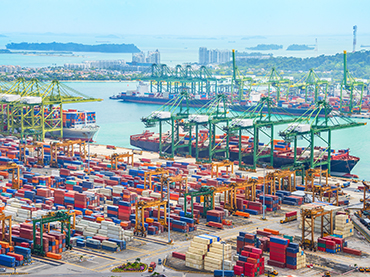Opening Address by Acting Minister for Transport Mr Chee Hong Tat at Singapore Celebrates 3 Billion GT in Vessel Arrival Tonnage Event
Distinguished friends of the maritime community,
Our sisters and brothers from the unions,
Ladies and Gentlemen,
1 Good morning, and thank you for being here on Boxing Day.I hope everyone had an enjoyable Christmas with your friends and family.
2 Let me start by extending my heartiest congratulations to the Master and crew of container ship “ONE OLYMPUS”. The arrival of your ship in our port marks a key milestone for Maritime Singapore, because we have now crossed three billion gross tonnes in our annual vessel arrivals for 2023.
3 It is also apt that we celebrate this occasion with a vessel from Ocean Network Express. My appreciation to Mr Jeremy Nixon and your team at ONE for your steadfast support for Maritime Singapore since the set-up of ONE’s global headquarters in Singapore in 2018.You have been a good friend and reliable partner, and we greatly appreciate your support and growing presence here in Singapore.
Significant achievements amidst global challenges
4 Today’s breakthrough of over three billion gross tonnes in annual vessel arrivals is especially significant, given the choppy waters that Maritime Singapore had to navigate in the past few years. Besides the industry downturn in 2016, more recent challenges include supply chain disruptions when COVID-19 struck and now, slowdowns in production and consumption amidst elevated inflation as we emerge from the pandemic. Rising geopolitical tensions around the world and military conflicts between Russia and Ukraine, and between Israel and Hamas which have spilled over to the Red Sea and affected ships sailing through the Suez Canal, have added to economic uncertainty and instability.
5 MOT and MPA are carefully monitoring these developments and keeping in close contact with our partners and stakeholders, to see how we can work together to mitigate the disruptions.
6 As we have done so for previous challenges, I am confident that our port’s connectivity, efficiency, and reliability will enable Singapore to play a key role of a catch-up port, working closely with the major shipping lines to facilitate the flow of goods around the world.
Poising our port for the future
7 As we deal with these near-term challenges, we must not take our eye off the medium to longer-term horizons.We need to tackle both sets of challenges at the same time, both the near-term and also the medium- to longer- term.Singapore is pressing on with the development of our next-generation container port at Tuas.
8 Over the past year, we opened 3 more berths under Tuas Port Phase 1 to increase our operational berths to a total of 8. We have completed 70% of reclamation works for Tuas Port Phase 2 and made good progress on the plans for Tuas Port Phase 3 reclamation. MPA is working with the National Environment Agency to explore the use of treated landfill mixed materials from Semakau Landfill as an alternative to sand for the reclamation, improving Singapore’s resource sustainability and resilience.
9 Tuas Port will also be a green and sustainable port. Electrified equipment and vehicles at Tuas Port will replace diesel-powered prime movers, halving the carbon emissions from these vehicles. If in the future, our electricity production reaches net-zero, the electric vehicles will also be net-zero in emissions. The super low energy building at Tuas Port will also achieve almost 60% in energy savings compared to similar sized buildings and can generate enough solar energy to fully offset its electricity consumption.
10 At the same time, we are also making progress to enhance port efficiency, which will be good for business and the environment. In October this year, MPA implemented the digitalPORT@SG Just-In-Time Planning and Coordination Platform for vessels visiting PSA Terminals and Jurong Port for cargo operations. This digital platform shows near real-time data on vessel and port resources, facilitating optimal arrival and departure of vessels to and from the port of Singapore.
11 More efficient vessel turn-around times not only reduces carbon emissions due to shorter port stays and better voyage planning, but also allows port users to benefit from cost and time savings. This initiative will be rolled-out to tankers berthing at energy terminals and to all vessels calling at the anchorages in 2024.
Conclusion
12 As we steer Maritime Singapore forward, we will need the steady hands of our tripartite partners on deck, including many of you who are present here today. I am proud and honoured to celebrate this happy occasion with all of you.
13 We must never forget that the most important success factor of our port is our strong tripartite partnership. This creates the trusted ecosystem which allows all partners and stakeholders to collaborate and innovate together, to solve problems as one team through mutual understanding and give & take, and to pull together in one direction when we encounter choppy seas.
14 Other people may try to copy our hardware and infrastructure, they may even try to follow our technologies and operating systems. We can’t avoid that. But many find it difficult to replicate our trusted tripartite ecosystem in Singapore. This is therefore one of the key elements which gives us an edge to stay ahead of the competition, and take Maritime Singapore to even greater heights.
15 So I want to end my speech by dedicating this three billion gross tonnes achievement to each and every member of the Maritime Singapore family.Thank you everyone for your hard work, and I wish you and your loved ones good health and a fulfilling and successful year ahead!
